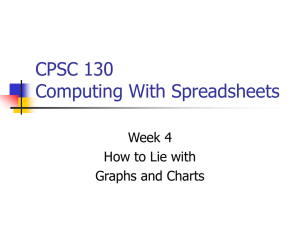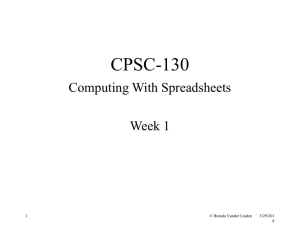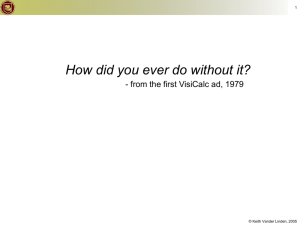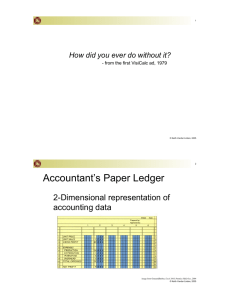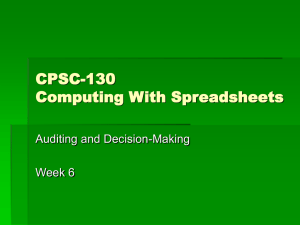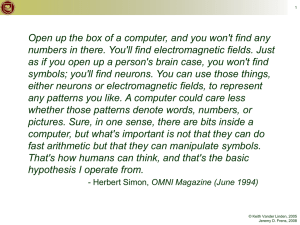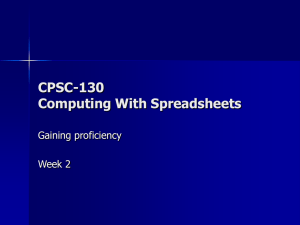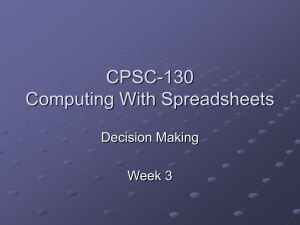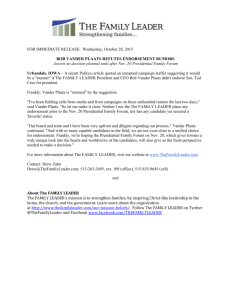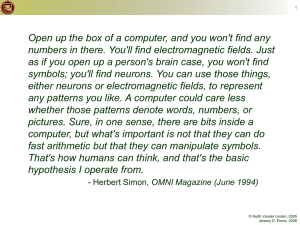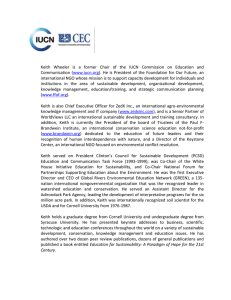CS 324 CCE across the Digital Divide David Laverell Keith Vander Linden
advertisement
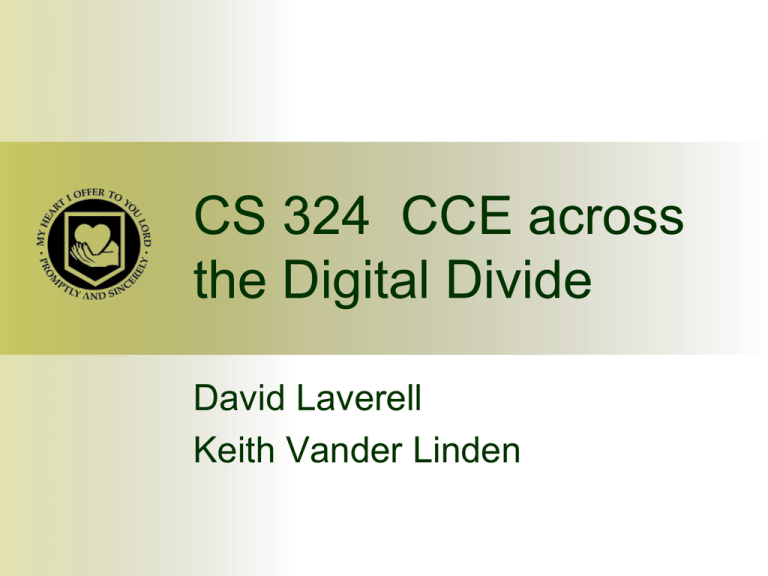
CS 324 CCE across the Digital Divide David Laverell Keith Vander Linden 2 Overview ● The Course http://cs.calvin.edu/curriculum/cs/324/ ● The Digital Divide ● Logistics © Keith Vander Linden, 2005 3 The Digital Divide ● ● ● This term was first popularized by Larry Irving in the mid-1990s. It refers to differences between social and racial groups with respect Information and Communication Technology (ICT). This issue has broad social, economic, political and religious ramifications. © Keith Vander Linden, 2005 4 Dimensions of the Digital Divide ● ● The digital divide has several dimensions. It can distinguish groups based on: – access to computers and/or the internet – level of ICT literacy ● The groups it distinguishes include: – – – – – Economic groups Geographic groups Racial groups Gender groups Age groups © Keith Vander Linden, 2005 5 Who really cares? ● How bad is the digital divide really? ● Do we really need to bridge it? ● What good can we do anyway? © Keith Vander Linden, 2005 6 ICT Hardware for the Masses ● ● ● Moore’s “law” has tended to bring more power, but not necessarily lower prices. There are some efforts to address this: – OLPC’s XO-1 laptop project – Intel’s World Ahead project Most organizations are looking into this. © Keith Vander Linden, 2005 7 ICT Literacy for the Masses ● ● ICT fluency is fundamental. Connect students will learn the concepts, skills and issues required to: – Set up and administer a personal computer – Connect to the Internet – Use the web and electronic mail – Protect the integrity of their machine ● Helpdesk service is also important. © Keith Vander Linden, 2005 8 Cross-Cultural “Literacy” ● ● Cross-cultural fluency is also fundamental. CS 324 should enable Calvin students to: – Understand the nature of the digital divide and what effect it has on underprivileged groups – Articulate how to help bridge the digital divide – Develop a limited but personal relationship with members of an underprivileged group – Gain a better understanding of themselves and their own culture © Keith Vander Linden, 2005 9 Hidden Rules Among Classes POVERTY MIDDLE CLASS POSSESSIONS People. Things. MONEY PERSONALITY To be used, spent. Is for entertainment. Sense of humor is highly valued. Social inclusion of people he/she likes. Key question: Did you have enough? Quantity important. Clothing valued for individual style and expression of personality. To be managed. Is for acquisition and stability. Achievement is highly valued. Emphasis is on self-governance and self-sufficiency. Key question: Did you like it? Quality Important. Clothing valued for its quality and acceptance into norm of middle class. Label important. Future most important. Decisions made against future ramifications; SOCIAL EMPHASIS FOOD CLOTHING TIME Present most important. Decisions made for moment based on feelings or survival. EDUCATION Valued and revered as abstract but not as reality. DESTINY Believes in fate. Cannot do much to mitigate chance. LANGUAGE Casual register. Language is about survival. FAMILY STRUCTURE Tends to be matriarchal. WORLD VIEW Sees world in terms of local setting LOVE Crucial for climbing success ladder and making money. Believes in choice. Can change future with good choices now. Formal register. Language is about negotiation. Tends to be patriarchal. Sees world in terms of notional setting. Love and acceptance conditional and based largely upon achievement. DRIVING FORCES Love and acceptance conditional based upon whether individual is liked. Survival, relationships, entertainment. Work, achievement. HUMOR About people and sex. About situations. WEALTH One-of -a-kind objects, legacies, pedigrees. To be conserved, invested. Is for connections. Financial, political, social connections are highly valued. Emphasis is on social exclusion. Key question: Was it presented well? Presentation important. Clothing valued for its artistic sense and expression. Designer important. Traditions and history, most important. Decisions mode partially on basis of tradition and decorum. Necessary tradition for making and maintaining connections. Noblesse oblige. Formal register. Language is about networking. Depends on who has money. Sees world in terms of international view. Love and acceptance conditional and related to social standing and connections. Financial, political, social connections. About social faux pas. © KeithInc., Vander Source: Ruby Payne, A Framework for Understanding Poverty. Highlands, TX: aha! Process, 1996,Linden, pp. 42 - 2005 43 10 Project Connect Demographics Year Total White AfricanAmerican Hispanic Asian total % total % total % total % 2007 28 3 10.7% 15 53.6% 6 21.4% 4 14.3% 2006 31 3 9.7% 14 45.2% 11 35.5% 3 9.7% 2005 22 5 22.7% 11 50.0% 6 27.3% 0 0.0% 2004* 25 6 24.0% 13 52.0% 6 24.0% 0 0.0% 2003* 24 5 20.8% 9 37.5% 9 37.5% 0 0.0% 2002* 12 4 33.3% 4 33.3% 4 33.3% 0 0 *These are rough estimates. © Keith Vander Linden, 2005

